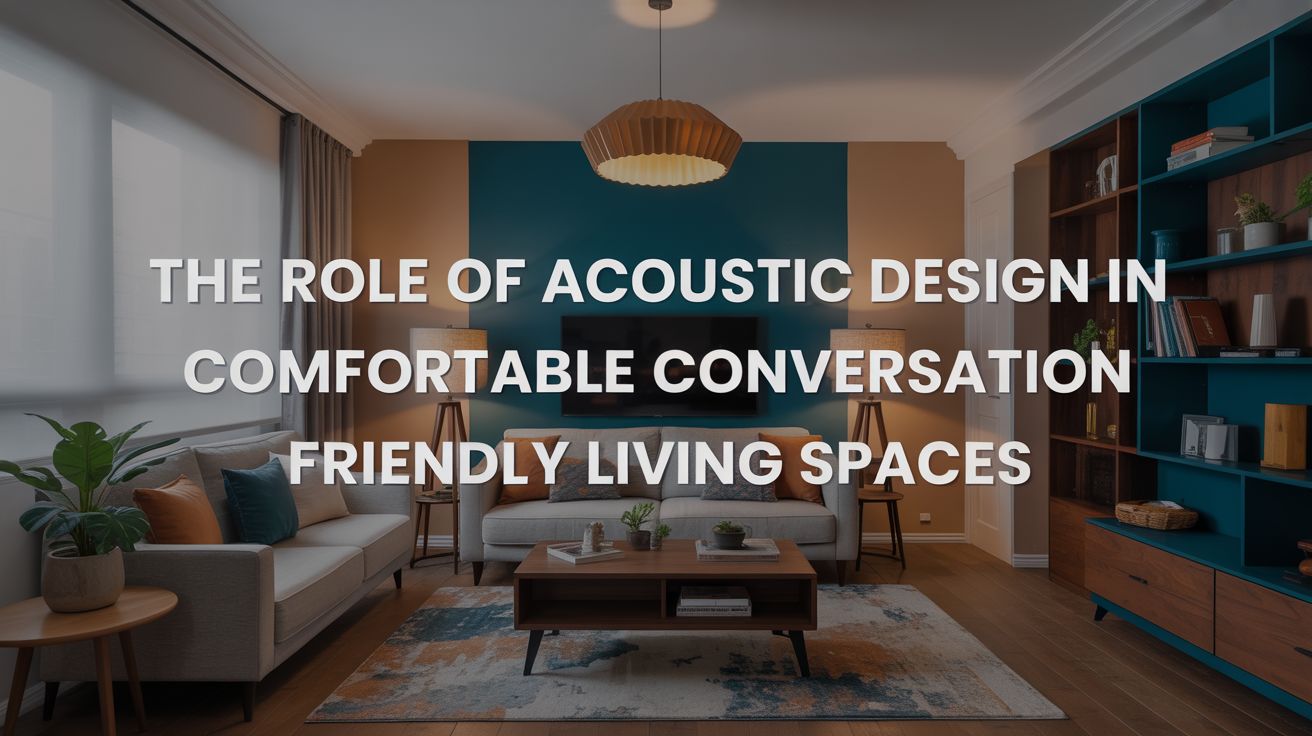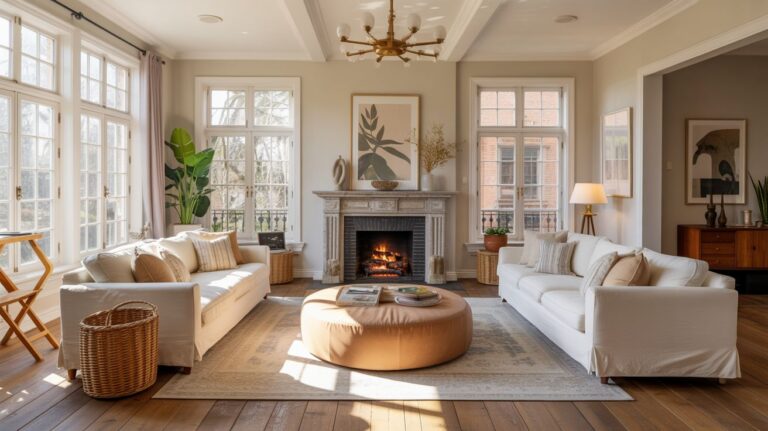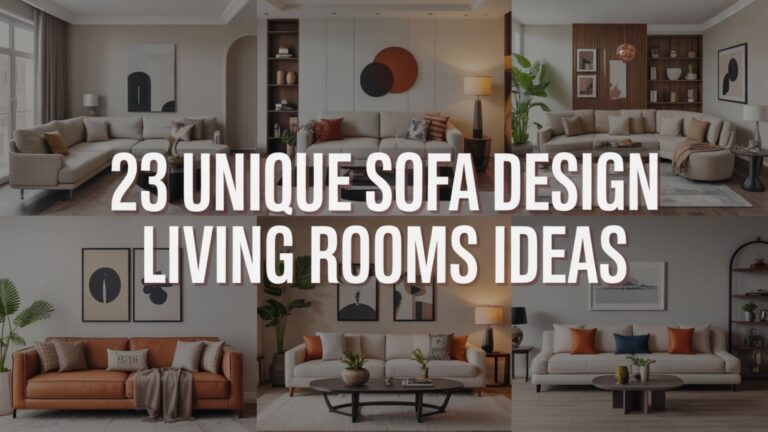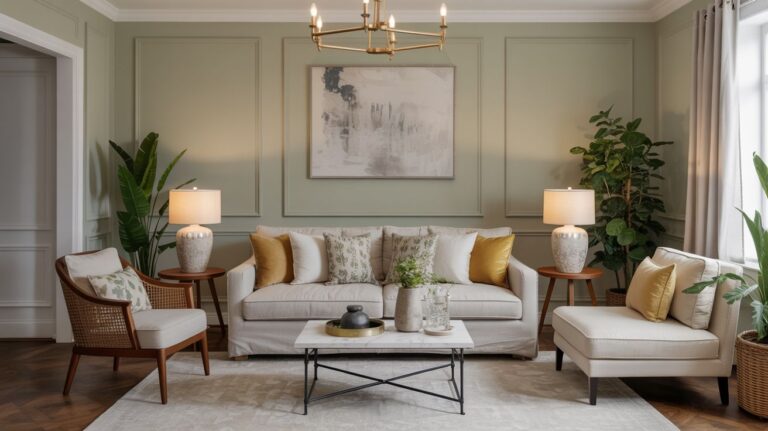The Role of Acoustic Design in Comfortable, Conversation-Friendly Living Spaces
I have been, or can be if you click on a link and make a purchase, compensated via a cash payment, gift, or something else of value for writing this post. As an Amazon Associate, I earn from qualifying purchases. Please read my full Affiliate Disclosure for more information.
Acoustic design shapes your daily conversations by balancing absorption, diffusion, and reflection to create speech-friendly rooms that feel natural and comfortable. You’ll control reverberation with targeted absorbers and smart diffusion to reduce standing echoes while preserving warmth. Layouts guide sound to critical zones, minimizing flutter and noise intrusion from outside. Integrate unobtrusive tech and tuned surfaces to maintain clarity without over-processing. Stay tuned for practical, room-by-room strategies you can apply right away.
Key Takeaways
- Acoustic design shapes speech clarity and comfort by controlling reverberation and echoes with targeted absorption and diffusion.
- Proper material choices (porous absorbers, textiles, wood) balance warmth with intelligibility.
- Spatial strategies, such as optimized seating and zone separation, reduce disruptive sound travel.
- Technology and masking are used judiciously to enhance clarity without masking voices or creating fatigue.
- Ongoing testing and adjustments ensure solutions remain natural, unobtrusive, and aligned with daily living needs.
Understanding Acoustic Design in Living Spaces
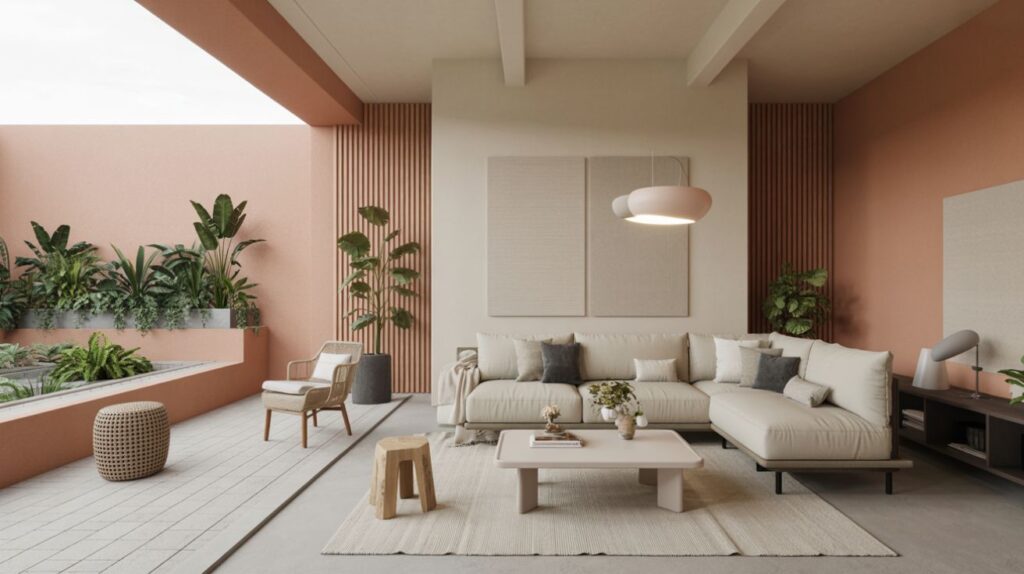
Understanding acoustic design in living spaces involves aligning sound behavior with human needs and room usage. You assess how people move, talk, and listen, then tailor surfaces, layout, and equipment to support clear communication. The goal is minimize disturbances from background noise while preserving essential cues for safety and comfort. You’ll consider sources, such as street traffic or appliances, and how they intrude on conversations. Outdoor acoustics matter: exterior noise, reflections, and dampening influence indoor experience, so you select shielding, landscaping, and enclosure strategies. Practical decisions balance function, aesthetics, and adaptability for daily activities and varied spacial uses.
The Basics: Absorption, Reflection, and Diffusion
You’ll start by balancing absorptive materials with reflective surfaces to control how sound energy is captured and returned. Consider how diffusion principles spread sound evenly across a space, reducing hotspots and quiet zones. This primer links the choices of materials, surfaces, and layouts to measurable outcomes in clarity and comfort.
Absorptive Materials
Absorptive materials trap and convert sound energy into heat, reducing reflections and smoothing overall room acoustics. You’ll use them to control reverberation time and clarify spoken content without relying on loudness. Common options include porous foams, mineral wool, and fiberglass, chosen for thickness, density, and frequency response. Placement matters: align coverage with critical zones like seating and conversation paths, balancing aesthetics with effectiveness. Combine with door and window seals to enhance overall performance. When planning, consider soundproofing techniques and, where appropriate, sound masking strategies to maintain comfortable levels during both quiet and active moments.
Reflective Surfaces Impact
Reflective surfaces play a pivotal role in shaping room acoustics by directing sound energy after it leaves its source. You’ll consider how mirrors and glossy walls reflect, concentrating energy in ways that can blur speech cues or create startling echoes if poorly placed. Mirror effects may amplify voice paths, increasing intelligibility gaps between talkers and listeners when angles misalign. Decorative surfaces influence reflection rather than absorption, offering aesthetic value with measurable acoustic consequences. Use controlled angles, material contrasts, and fixture placement to avoid harsh glare or flutter echoes. Balance reflections with nearby absorbers to maintain clear, comfortable conversations.
Diffusion Principles Explained
Diffusion scatters sound in many directions, smoothing energy across a space so no single path dominates. You’ll learn how diffusion offsets strong reflections by creating a varied arrival of waves, reducing focal buildups while preserving a sense of space. In practice, diffusion uses irregular or patterned surfaces to break up wave fronts, encouraging gradual energy distribution rather than harsh echoes. Absorption still handles excessive energy, and reflection is tempered by geometry. Consider diffusion pattern optimization to tailor speech intelligibility and liveliness. By analyzing sound wave interference and material responses, you can fine‑tune room character without sacrificing clarity.
How Reverberation Impacts Conversation and Comfort
You’ll see that reverberation affects how clearly you hear and speak in a space, so controlling echo directly supports smoother conversations. By applying targeted echo control techniques, you reduce muffle and repetition, which strengthens speech clarity and reduces listener fatigue while you settle into longer discussions. This sets the stage for practical comfort gains, as people feel less strained and more engaged during everyday interactions.
Echo Control Techniques
Echo control in living spaces is less about silence and more about managing how sound energy persists after a source stops. You mitigate reverberation with measured material choices and placement. Use targeted absorption panels and acoustic ceilings to reduce flutter and longer decay times, while avoiding over-dampening that dims intimacy. Treat surfaces strategically: porous mats, fibrous textiles, and diffusers align with room use, capturing excess energy without muffling conversation. Integrate soundproofing techniques where needed, especially near shared walls. For exterior concerns, implement outdoor noise mitigation strategies alongside interior tweaks to sustain clarity without isolating social warmth.
Speech Clarity Benefits
Speech clarity hinges on how reverberation shapes spoken communication in a living space. When reverberation is balanced, you hear words clearly; when excessive, you struggle to follow conversations, causing fatigue and frustration. By tuning surfaces and volumes, you preserve intelligibility without sacrificing warmth. Consider how sound masking and speech privacy interact: masking can reduce distracting echoes, while maintaining privacy so you don’t feel exposed. You gain reliability in dialogue, fewer repeating interruptions, and lasting comfort during daily interactions.
- Balanced reverberation improves comprehension
- Targeted masking enhances focus and privacy
- Clear dialogue reduces fatigue
- Practical tuning yields lasting comfort
Material Choices That Balance Warmth and Clarity
Materials that balance warmth and clarity in living spaces hinge on the right mix of absorption and reflection. You’ll optimize this balance by selecting materials with predictable acoustic properties, not just aesthetics. Prioritize mid-to-high absorption fabrics in soft furnishings to reduce excessive reverberation, while preserving presence and intelligibility. Use decorative textiles to tune room tone without dulling dialogue; contrast with harder surfaces kept at controlled levels to maintain clarity. Consider outdoor acoustics properties for exterior walls and ceilings adjacent to living areas to minimize outdoor noise intrusion. Pair appropriate woods and laminates with textiles to sustain warmth, without compromising speech intelligibility.
Layout and Spatial Strategies for Better Speech Intelligibility
Effective layout and spatial planning can substantially boost speech intelligibility by controlling how sound travels and is perceived in a room. You’ll optimize conversations through deliberate arrangement, reducing reflections and dead zones while fostering natural dialogue. Focus on zones, sightlines, and material contrasts that guide energy where you want it.
- Establish acoustic zoning to separate talk areas from noise sources, improving clarity.
- Use sound masking subtly to raise conversational comfort without masking voices.
- Align seating and walls to minimize flutter and short reflections.
- Place absorptive surfaces where chatter converges, preserving warmth without overpowering speech.
Integrating Technology for Clearer Sound Without Compromise
Integrating technology for clearer sound without compromise means selecting tools that enhance intelligibility without altering the room’s natural balance. You should evaluate devices by directivity, latency, and spectral performance, ensuring minimal acoustic intrusion. Prioritize smart speakers that offer adjustable EQ, room calibration, and reliable voice pickup without muddying overall ambiance. Noise canceling technology can improve detectability of speech but must be implemented without creating artificial dead zones or subduing room reverberation essential to warmth. Test in situ, comparing informal conversations and background noise. Choose scalable, transparent systems that align with your room’s acoustics, avoiding gimmicks or excessive processing.
Practical Implementation: A Room-by-Room Guide
To implement acoustic design room by room, start with a clear diagnostic: map typical use, sources of noise, and desired speech intelligibility for each space. Then implement targeted measures that balance function with comfort.
1) Evaluate room function, traffic patterns, and critical listening zones to prioritize treatments.
2) Plan sound masking and engagement strategies to sustain privacy without overpowering conversations.
3) Align outdoor acoustics with indoor goals using barriers, planting, and layout adjustments.
4) Test and adjust acoustics iteratively, documenting outcomes for consistent results and user satisfaction.
Conclusion
You’ll optimize comfort and clarity by balancing absorption, diffusion, and reflection. Prioritize controlled reverberation: keep it low enough for conversation, but not sterile. Choose warm, non-resonant materials and layered textures to soften echoes without dulling speech. Arrange spaces to shorten line-of-sight distances and minimize hard, parallel surfaces. Integrate discreet tech for intelligible sound without dominates. Implement room-by-room tweaks now, measure performance, refine details, and you’ll achieve conversation-friendly living spaces that feel both inviting and precise.
